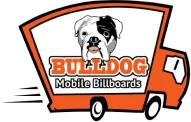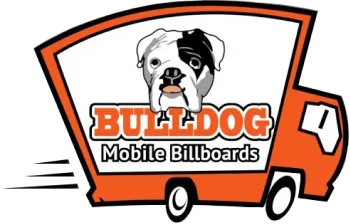Your Client On The Sides of Trucks
Huge ads can be towed behind on beds of large trailers
By Deigo Vasquez
March 9, 2009
Years ago it must have seemed a goofy idea, putting ads on the sides of vehicles and then driving those vehicles through city streets, hoping people might notice. It turned out to be not such a goofy idea after all when in fact people did notice, and it got to be an even smarter idea with the rising ad clutter in traditional media like television. In the new equation, a message on the side of a truck on Fifth Avenue that turns heads trumps a TiVo-zapped TV spot any day.
In the meantime, truck-side advertising got a lot more sophisticated, technology wise. Now, in addition to traditional static messages, trucks can deliver what amounts to a movable stage-and-light show.
To find out how to get your client’s message on trucks, read on.
This is one in a Media Life series on buying out-of-home venues. They appear weekly.
Fast Facts
What
Advertising on the sides of trucks that travel city streets.
Who
A number of companies offer advertising on trucks, and media buyers are encouraged to investigate vendors in every market. For this article Media Life looked at GoMobile Advertising in Kent, Wash, GoGorilla Media in New York and Bulldog Mobile Billboards in Dallas.
How it works
Still the most common form of truck advertising is static signage, often on a trailer, and the message space can measure 8 feet by 16 feet or 10 feet by 22 feet. Their size, and the fact that they are elevated on a truck bed, makes them visible to pedestrians and other people in nearby cars even in bumper-to-bumper traffic.
Another option is the opportunity to run a sequence of ads that can be scrolled as the truck rolls from neighborhood to neighborhood. Alternatively, the truck might scroll ads from multiple advertisers.
Advertisers can go fully digital with full-motion video, airing TV-style spots, clips from TV shows or movies, scenes from videogames, or whatever might appeal to the audience they are trying to reach.
These video trucks typically show up at events or gatherings and can themselves be the center of attention. Sound is also available. Another option is interactivity, where members of the audience can connect via keyboards or videogame consoles. One use might be to promote a new video game, where potential buyers are given the opportunity to try the game out.
One note, though: These features are intended to be in play when the trucks are parked, not while moving.
Another option available to advertisers is trucks whose trailers become three-dimensional staging areas, in effect, whether open or encased in an acrylic shield to keep the weather out. The retailer Ikea has used enclosed truck beds to display room designs featuring its furniture.
Now on tour is truck that combines traditional static advertising with this sort of display. It’s sponsored by the National Education Association to promote reading among kids, and the theme is the Dr. Seuss book “The Cat in the Hat.” When static ads are removed from the sides of the truck, children see a scene from the book, and that scene then becomes live as actors play characters from the story.
Still another option for advertisers, one that especially makes sense for longer-term branding, is to place one’s message on fleets of trucks that are used by electricians, plumbers, movers and the like.
These are businesses where their trucks are typically out all day long, getting lots of exposure as they move from location to location. The advertisers pay the businesses to have their message on the exterior.
Markets
Truck advertising can be done in any market.
Numbers
As with street teams, there’s no real data that measures the effectiveness of Segway campaigns, since each campaign is unique with its own objectives.
How it is measured
Department of Transportation traffic counts are used to gauge potential impressions, and attendance information is used for trucks parked at or near events. Some truck fleets are audited by the Traffic Audit Bureau.
What product categories do well
Frequent truck advertisers include tourism, movies, political, restaurants/fast food, real estate, retail and videogames.
Demographics
Truck ads on fleets are a mass medium, hitting a wide variety of audiences. But advertisers can target audiences by specific neighborhood or areas of a city.
Making the buy
GoMobile Advertising has a variety of truck options, including fleet vehicles, trucks that scroll ads and three-dimensional showroom trucks. Rates for scrolling ads are between $2,000-$4,000 a month for three ads and 160 hours of exposure. Three-dimensional showroom trucks start at $20,000 per month.
GoGorilla Media offers video truck advertising, with screens on two or three sides of the truck’s trailer. A three-day campaign in major markets costs around $3,200 per day.
Bulldog Mobile Billboards has a number of different ad trucks, including 3D mobile showrooms and trucks that pull 10-by-20-foot static ad panels. Pricing varies, but a two- to four-week 3D campaign averages $1,000 per day, while a four-week static panel campaign runs about $500 per day.
Who’s already advertising on trucks
Recent or current truck advertisers include J.C. Penney, Coca-Cola, KFC, Miller Chill, CVS, AT&T and HBO.
What they’re saying
“You can use video for movie trailers or for games outside comic book conventions. But if you have a clever video, you can really use it for any brand. You just always want people to know what it’s about, so you want the name of the advertiser to appear as much as possible.” — Sasha Engel, chief operating officer and chief financial officer at GoGorilla Media.
This Article © Media Life Magazine. Reprinted with permission. www.medialifemagazine.com


